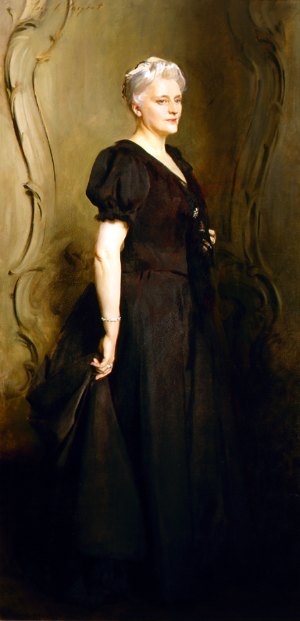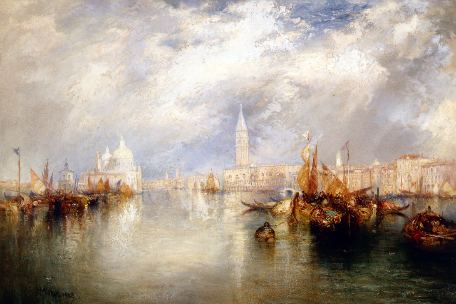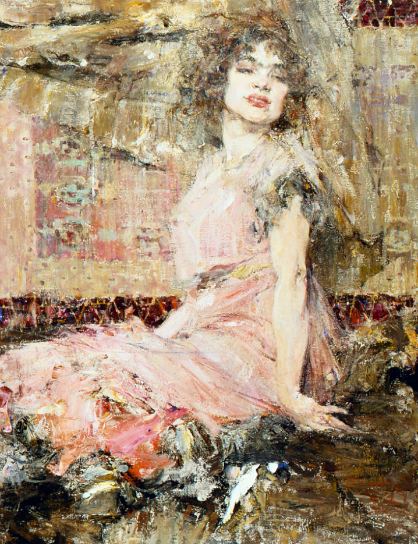The Frye is Rip Van Winkle with a sequel. It slumbered through the 20th Century and woke up in the 21st. Here’s the sequel: After striving mightily to keep its eyes open, it’s once again nodding off.
Little that Charles and Emma Frye acquired rises to the ranks of first-rate. Charles Frye saw Modernism as an unworthy aberration. Ida Kaye Greathouse, who followed her husband Charles Walser as the museum’s head, was if anything more conservative, although I am fond of a core of her late 19th and early 20th-century American purchases. Yes, she was after big names at reduced prices, rather than the best possible examples of same, but even so she managed to snag some great pictures.
Senior curator Robin Held sees it as her job to present the collections in the best possible light. She even brought on staff a specialist in the so-called Munich Secession, to help her. Fine, I thought. Let Jo-Anne Birnie Danzker handle the mixed-bag legacy and allow Held to focus on the contemporary moment. That’s her strength and the reason the Seattle audience developed high expectations from a dubious little institution.
Instead, legacy is in the driver’s seat. Everything now on view dares to be dull.
First up, Ida Kay Greathhouse: A Tribute. Where are her American greats? Not on view.
John Singer Sargent must have been short of cash to paint the vacuous flattery known as Mrs. Frederick William Roller from 1895. Those to continue to see him as shallow can bolster their viewpoint at the Frye.
 Thomas Moran did his best work at Yellowstone National Park. He’s a large part of the reason we have national parks. In Venice in 1908, however, he turned in a poor imitation of Turner.
Thomas Moran did his best work at Yellowstone National Park. He’s a large part of the reason we have national parks. In Venice in 1908, however, he turned in a poor imitation of Turner.
 Greathouse adored the Russian expatriate Nicolai Ivanovich Fechin. I imagine she had her pick of that market. Below, Lady in Pink (Portrait of Natalia
Greathouse adored the Russian expatriate Nicolai Ivanovich Fechin. I imagine she had her pick of that market. Below, Lady in Pink (Portrait of Natalia
Podbelskaya), 1912.
 Onward to another Greathouse tick: Northern Latitudes: The Frye and Alaska, featuring Jules Dahlager, Ted Lambert, Sydney Laurence, Fred
Onward to another Greathouse tick: Northern Latitudes: The Frye and Alaska, featuring Jules Dahlager, Ted Lambert, Sydney Laurence, Fred
Machetanz, Theodore Richardson, Cleveland Rockwell, Jonathan Van Zyle,
and Eustace Ziegler. They’re not all terrible painters. I like Rockwell, but why these painters? And why didn’t she pick better examples? Most of the ones she brought home are bombastic at best.
That leaves
Tête-à-tête: 150 paintings from the Charles and Emma’s overexposed, profoundly mediocre holdings; Fred Machetanz (1908-2002) photos lithographs of the standard sublime in Alaska, and the somewhat interesting A Day in Skaguay, filmed by Burton Holmes (1870-1958), who in 1904 coined the term travelogue to advertise travel lectures with projections of hand-painted glass-lantern slides and early films. Interesting that everyone was fashionable and white in Alaska during those early years.
Out of kindness I’m skipping the exhibit exclaiming over Charles Frye’s entrepreneurial efforts. (He was a meat packer and landlord.) Museums need to remember that’s it’s OK to take the money, but they don’t have to kiss the customer on the lips.
The Frye picks up the pace in the fall.
Opening Oct. 9, still more about the Munich Secession: Séance: Albert von Keller and the Occult, but there’s also Implied Violence: Yes and More and Yes and Yes and Why, featuring sculptures, costumes, props, masks, video- and photo-documentation of
selected past performances of the Seattle performance group as well as a new performance created for the Frye. That could be good. Who gets the catalog? Keller and his swooning ladies, of course.



Regina,
I was just thinking about the concept of private to public collections, (and buying mediocre work for the artist name), after visiting the Barnes yesterday. That private collection is incredible (as long as you can ignore most of the Renoir’ save for a study of apples). It’s too bad there aren’t more examples like the Barnes out there.
Jen: Exactly. Charles Frye had the money, the interest and the commitment to assemble a great art collection. But he was not open to greatness. Nor were the Greathouses. They had no education in art and felt they didn’t need any. Philly has the Barnes. New York has the Frick. LA has the Getty. And Seattle has the Frye. I love Robin Held, but I’m sick of her squinting at that collection to try to find its best light. Yes, the Frye is a gift to the city. But it could have been so much better.
chuckles…
A couple of corrections – Ida was married to Walser Greathouse, not Charles.
And the Machetanz works are not photographs – they are stone lithographs.
Next up will be a pop quiz on who curated these summer exhibitions…
I like you remember the reactionary Frye Art Museum. It was not all bad. And new things aren’t all good. I believe this critique is too sweeping.
Paul W.
I agree with you .
Regina has been snapish lately.
I think a soothing cup of tea is in order.
I was in the Frye last week and could barely breathe in there, it was so mediocre. I’ve seen better art on car bumpers. Just because somebody’s from the long ago doesn’t mean he gets a pass from criticism. The Frye is a wonderful surprise when it’s good. I’m grateful for everything Robin Held has done. I remember before her I almost never went there and when I did, I remembered why I didn’t. That’s what the place looks like now. What it looked like in the old days. Please let us not return to them. Enough alright already with the Munich School from the 19th Century and bad painters from Alaska and that gawd-awful Russian with all the gaudy splatter.